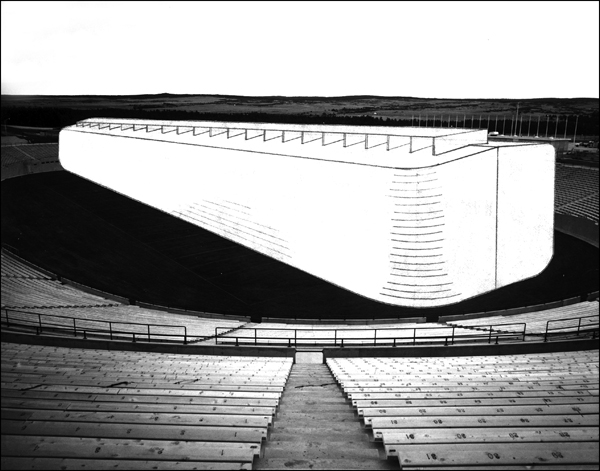Below is the online edition of In the Beginning: Compelling Evidence for Creation and the Flood,
by Dr. Walt Brown. Copyright © Center for Scientific Creation. All rights reserved.
Click here to order the hardbound 8th edition (2008) and other materials.
131. Was There Room?
Could the Ark have held all the animals? Easily. [See Figure 41.] A small number of humans, some possibly hired, could build a boata large enough to hold representatives of every air-breathing land animal—about 16,000 animals in all. Sea creatures did not need to be on the Ark, nor did insects or amphibians. Only mammals, birds, reptiles, and humans. The Ark, having at least 1,500,000 cubic feet of space, was adequate to hold these animals, their provisions, and all their other needs for one year.b
Since the flood, many offspring of those on the Ark would have become reproductively isolated to some degree due to mutations, natural genetic variations, and geographic dispersion. Thus, variations within a kind have proliferated. Each variation or species we see today did not have to be on the Ark. For example, a few wolflike animals were probably ancestors of the coyotes, dingoes, jackals, and hundreds of varieties of domestic dogs. (This is microevolution, not macroevolution, because each member of the dog kind can interbreed and has the same organs and genetic structure.) Could the Ark have held dinosaurs and elephants? Certainly, if they were young.

Figure 41: Ark in Football Stadium. This drawing shows how the Ark would fit into a football stadium. The Ark is frequently depicted as a small boat by those who have not bothered to check its dimensions. It was 300 cubits long, 50 cubits wide, and 30 cubits tall. While there were several ancient cubits (generally the distance from a man’s elbow to his extended fingers), a cubit was typically 1.5 feet or slightly longer. The 500-foot-long Ark would snugly fit in a football stadium and would be taller than a four-story building.
This sketch of the Ark is based on George Hagopian’s credible account (page 47). This Ark does not look like a boat. It has a flat bottom, is not streamlined, and has windows in its top. The flat bottom would have made loading on dry land possible. Streamlined shapes are important only for ships designed for speed and fuel efficiency—neither of which was needed by the Ark. Windows in the side might be nice for the passengers (or for the proverbial giraffes to stick their necks out), but side windows limit the depth of submergence and the maximum load. Riding low in the water gives a boat great stability. Actually, the Hebrew word for Ark does not mean boat; it means box, coffin, or chest—apt descriptions unknown to Hagopian.
What about plants? As the flood began, the powerful fountains of the great deep scattered throughout and even above the atmosphere seeds and spores that settled to earth for years afterward. Fortunately, the 46,000-mile-long fountains were at almost all latitudes. Had they followed an east-west (latitudinal) path, such as along the preflood equator, many plants we now have would have become extinct. [See pages 113–150 for details.]
This dispersion seems to explain the wide distribution of a few rare plants. As one of several examples—previously explained as “a giant fluke”c—the same unusual tree is on two tiny, mountainous islands on opposite sides of the globe: the acacia tree on mountains of Réunion Island in the Indian Ocean is genetically identical (except for one mutation) to the koa tree on mountain tops of Kauai, Hawaii. Had the seeds floated in seawater anywhere between those distant islands, they probably would not have germinated.d Had humans transported the seeds or plants, they should be growing near shorelines, not on mountain tops.d If a bird transported the seeds, one would not expect the seeds to survive the 11,400-mile journey; either they would have been digested internally, eliminated, or dislodged if carried externally.e
We have seen evolutionists use the “giant fluke” explanation hundreds of times—disguised in many forms:
a. “Yes, thousands of components of living things are incredibly complex; each was a giant fluke.”
b. “Yes, we can’t imagine how xyz could have happened, but over millions of years giant flukes could happen.”
c. “Yes, what we have discovered in outer space staggers the imagination; it must have followed a big bang—the biggest fluke of all.”
Beware of scientific explanations that are not based on (1) the laws of physics and chemistry, and (2) verifiable, physical evidence (measured or observed). What follows in Part II—an explanation for a catastrophic global flood—fulfills both requirements. The evidence is startling. Read slowly and carefully.